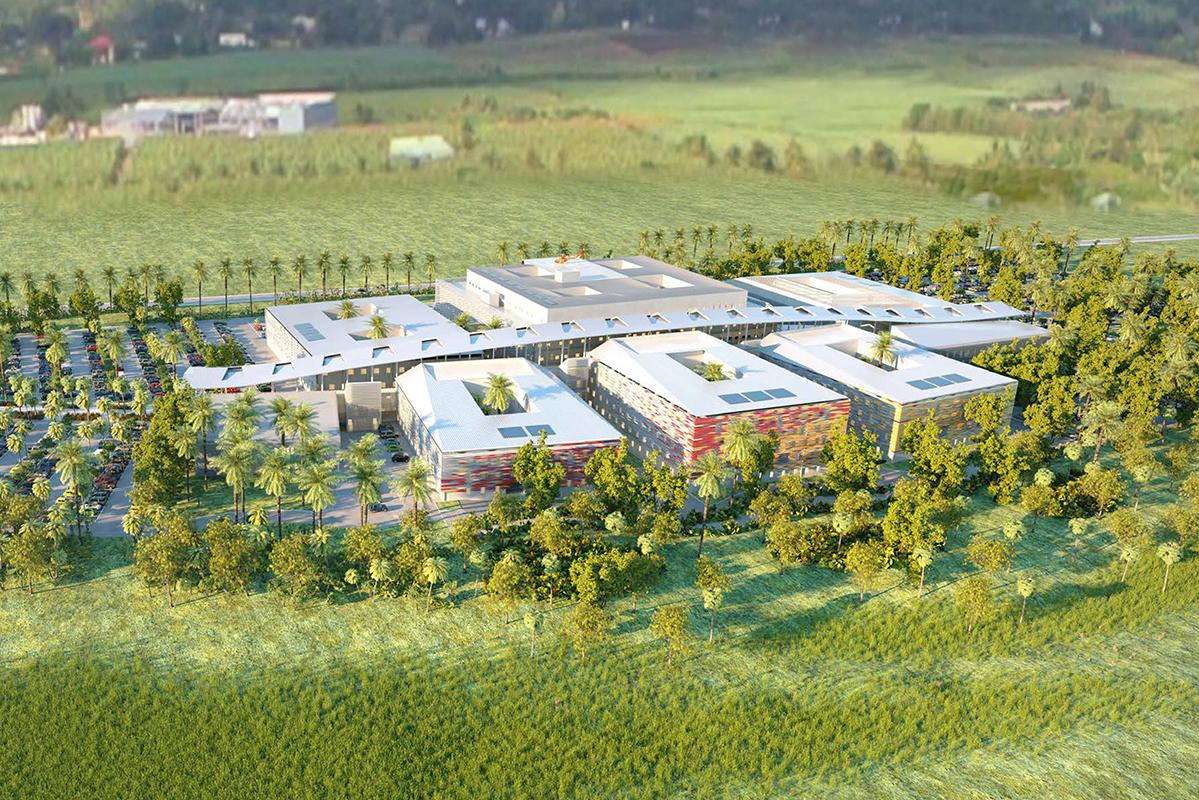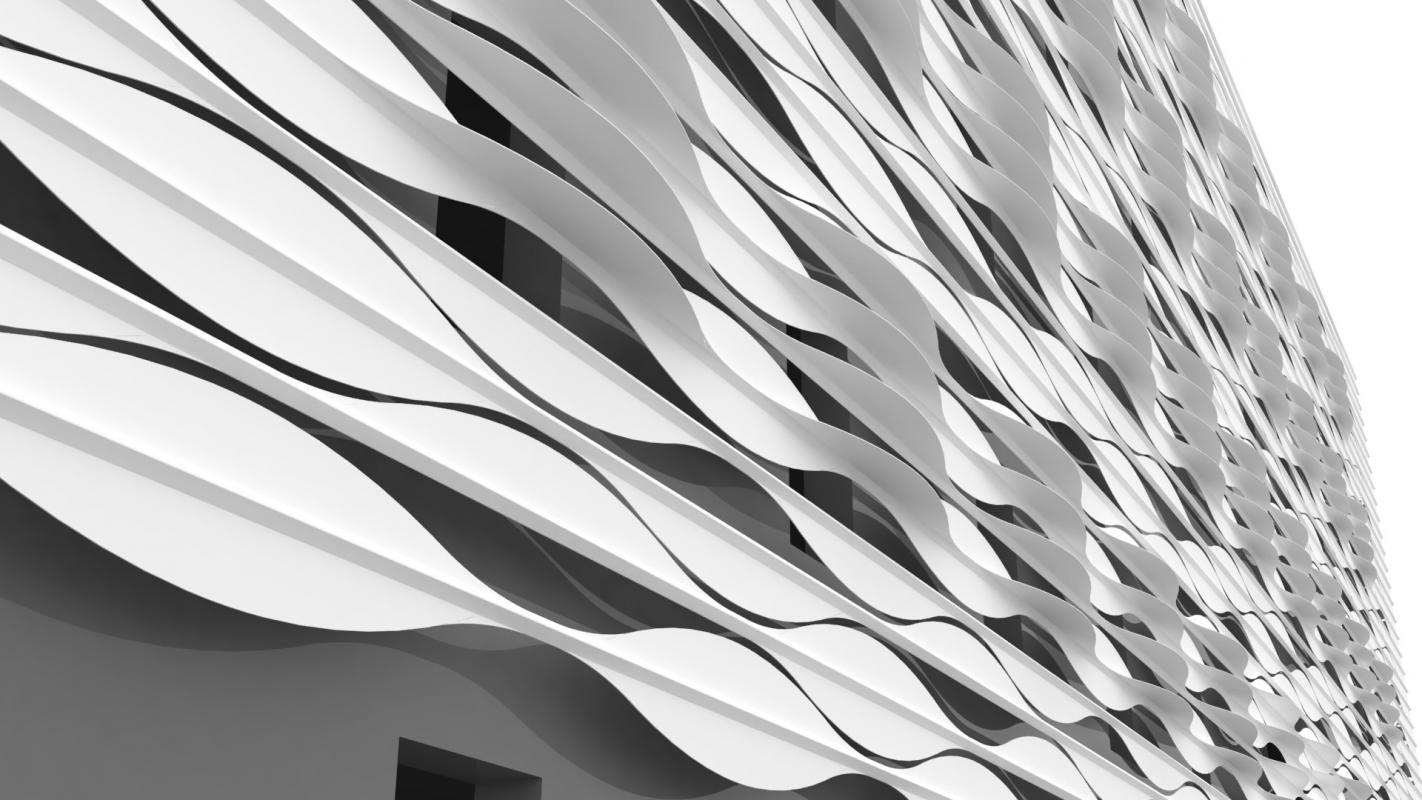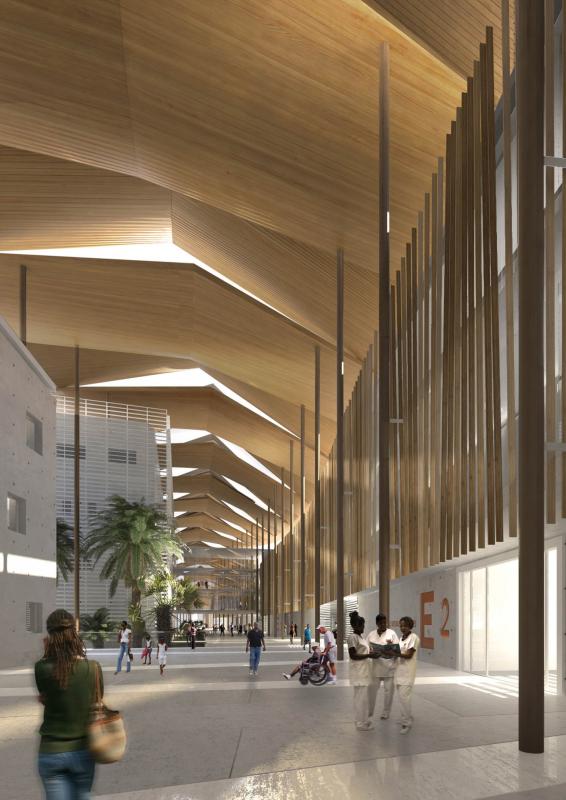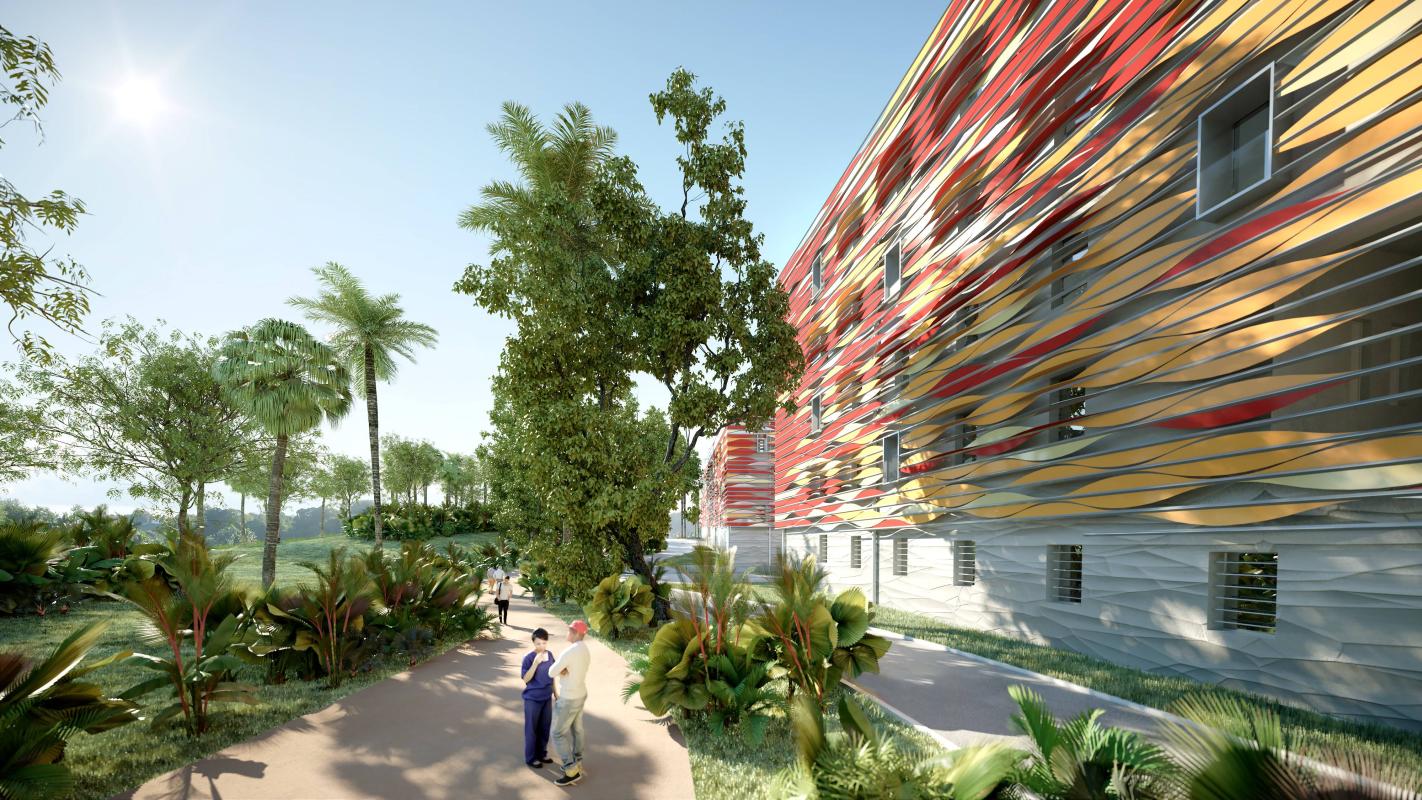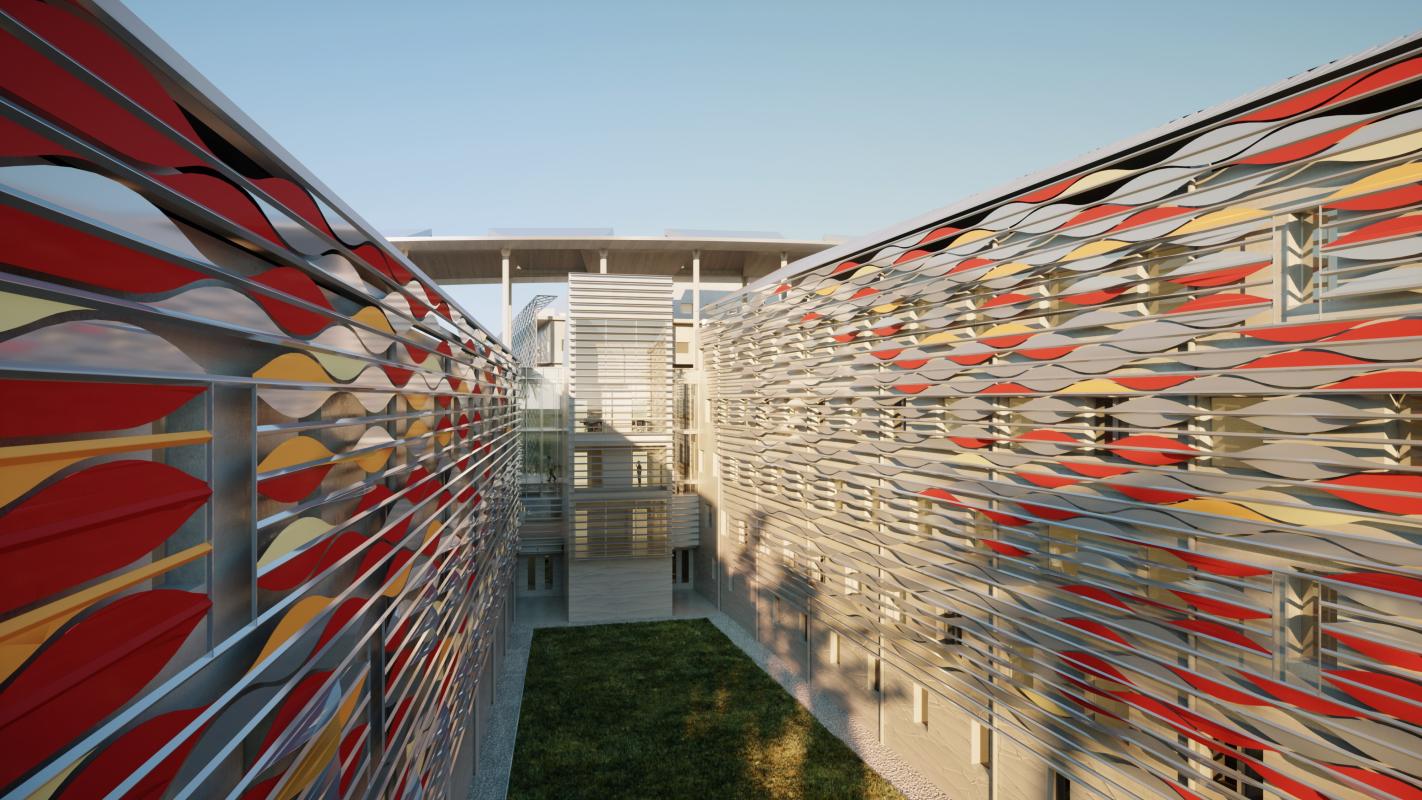C.H.U. Guadeloupe
New University Hospital of Point-à-Pitre / Les Abymes
Located on a 19-hectare greenfield site, the new Centre Hospitalier comprises 7 buildings: a medical facility (13 operating rooms, intensive care, emergency laboratories, medical imaging, etc.), four hospitalization buildings (672 beds), a logistics and catering building, and a technical/ambulance service building. This will be one of the largest hospital projects in France, and the largest building ever built in Guadeloupe (approx. 80,000m²).
The facility is to bring together the latest cutting-edge medical techniques in a building designed to meet the extreme conditions of its environment, in particular the region's very high seismic and cyclonic risks, as well as its tropical climate.
Architecture Studio's project imagines a hospital that is open to the natural environment, offering wide-open, naturally ventilated interior spaces. All the buildings are arranged along the "Caraïbes" street, a central covered axis that provides a link between the various departments.
T/E/S/S was in charge of designing the facade structures. The main concerns that were addressed was solar protection and resistance to the cyclonic winds. The new CHU is the result of an analysis of Guadeloupe's vernacular architecture, and is divided into several buildings of simple, compact form. This design effectively meets earthquake-resistant standards.
The envelope of the building as well as the solar shading protects the facades from potential debris caused by cyclonic winds.
The choice of brise-soleil, cladding and over-roofing, as well as the design of their fastening systems, is made to respond to this type of climatic risk. All external elements and curtain walls are resistant to high wind pressure, including cyclonic winds.
The unique design of the solar shading provides protection to each of the buildings. Various cladding solutions and sunshade geometries were studied, adapted to the orientation and requirements of each building. Modeling tests were carried out on these solar shading solutions, which were then implemented in the project's digital model to measure their effectiveness and architectural aesthetic.

